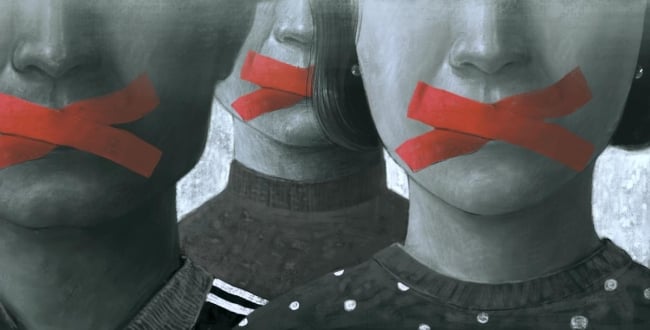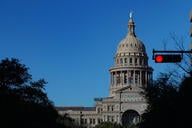You have /5 articles left.
Sign up for a free account or log in.

Jorm Sangsorn/iStock/Getty Images Plus
PORTLAND, Ore.—The provosts, deans and other academic administrators who gathered here last weekend at a meeting convened by the American Association of State Colleges and Universities are understandably concerned about the growing number of states that have considered or passed bills to restrict what is taught and said on college campuses—legislation that the arts and free expression group PEN America collectively calls “educational gag orders.”
”We’re seeing an avalanche of proposed or passed legislative restrictions on the freedom to learn and the freedom to teach,” Jeremy C. Young, senior manager of free expression and education at PEN America, told the group of officials from regional public colleges and universities. “We’ve seen nearly 200 of these bills proposed in the last 18 months, and 19 states have some version of educational gag order enforced by either law or policy.” (PEN America maintains a database of these sorts of measures.)
Some in the audience suggested the legislation was a solution in search of a problem. “I just don’t understand what the intention of the other side is,” said the provost at one university, who described himself as a liberal Democrat.
Young pushed back, in a way.
”I understand what they’re trying to do: they think conservative students feel uncomfortable in a classroom because their liberal professors are indoctrinating them. They think, ‘If we just ban certain stuff from the classroom, we can address that problem,’” Young said.
The lawmakers promoting that point of view are wrong about the cause of the problem and they’ve chosen the wrong way to try to solve it, Young told the attendees—“but there is a problem.”
“Students feel silenced,” but it’s generally not their professors doing the silencing, he said—it’s mostly their fellow students, who are more comfortable than ever before with the idea of restricting speech to protect people.
“We can’t ignore this problem,” he said. “But we have to provide an alternative to banning speech.”
It’s understandable that legislators and other critics of a perceived chill on campus free speech tend to blame professors, given historical data showing the left-leaning nature of the faculty and the occasional surfacing of videos—more common in the smartphone era but still rare—of individual professors taking political sides.
But results of recent surveys of students by groups like the Knight Foundation suggest that many students themselves seem willing to limit their peers’ speech.
Ashley Zohn, vice president for learning and impact at Knight, presented data from the foundation’s annual survey of college students in 2021 that showed a minority of students (47 percent) feel that free speech rights are secure, down from 73 percent in 2016. Republican students are far less inclined than their Democratic and Independent peers (27 percent versus 61 and 46 percent, respectively) to see free speech as secure. While significant majorities of students believe that free speech rights (84 percent) and having an inclusive society (73 percent) are important to democracy, both of those percentages have fallen by double digits since 2019.
The proportion of respondents who said the climate at their institution stifles free expression rose to 65 percent from 54 percent in 2016, and 17 percent said they had felt unsafe and 34 percent said they had felt uncomfortable on campus because of comments made by others.
Students over all are likelier to think that colleges should allow students to be exposed to all types of speech than to believe they should protect students by prohibiting speech they may find offensive or biased. But white students (65 percent) are far likelier than their Black (47 percent) and Hispanic (45 percent) peers to say that, and Republicans more likely (71 percent) than their Democratic (55 percent) or Independent (57 percent) counterparts.
While they are in the minority, a full third of students favor speech codes (about the same proportion who oppose them), and a quarter favor disinviting speakers “because some students perceive their message as offensive or biased against certain groups of people.” More Black students (37 percent) and Democrats (42 percent) favor disinviting offensive speakers.
Another participant in the AASCU panel, Domanic Thomas, vice chancellor for student affairs and enrollment at Washington State University at Vancouver, said he thought some of colleges’ own rhetoric may have subtly encouraged students to expect to be protected from hurtful forces.
“A lot of us go out and advertise [our campuses] as students’ home, as in ‘let’s make this a home,’” he said. “Then if we go ahead and allow Richard Spencer to come to campus, they may think, ‘How dare you allow this in my home?’”
There was widespread agreement that students are showing up on college campuses less informed about the importance of free speech and with “less experience with discussion and debate in the classroom,” as Zohn of the Knight Foundation put it.
A parallel survey by the foundation of high school students found that those who have had high school coursework that explores the First Amendment are 10 to 15 percentage points likelier to value the importance of free speech and the First Amendment and to oppose censorship.
There’s relatively little colleges can do to inject civics back into the K-12 curriculum.
But institutions can and must act to correct the fact that students are coming to campus not knowing how to talk to each other, said Young of PEN America.
Different pedagogies in the classroom can help, but teaching students how to talk to each other can also be modeled throughout the campus culture, he said. “It’s a teachable skill.”





